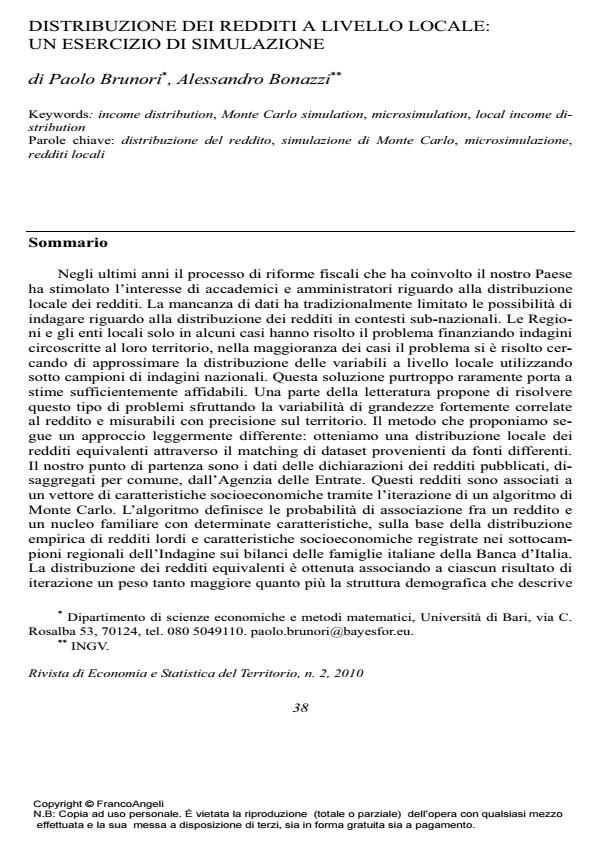Datasets Matching to simulate local Income Distributions: an exercise
Journal title RIVISTA DI ECONOMIA E STATISTICA DEL TERRITORIO
Author/s Paolo Brunori, Alessandro Bonazzi
Publishing Year 2010 Issue 2010/2
Language Italian Pages 16 P. 38-53 File size 331 KB
DOI 10.3280/REST2010-002002
DOI is like a bar code for intellectual property: to have more infomation
click here
Below, you can see the article first page
If you want to buy this article in PDF format, you can do it, following the instructions to buy download credits

FrancoAngeli is member of Publishers International Linking Association, Inc (PILA), a not-for-profit association which run the CrossRef service enabling links to and from online scholarly content.
In last decades Italian fiscal reforms have fueled policy makers and researchers’ interests on local income distributions. The lack of subnational data severely challenges, however, the possibility to carry out local income distribution analysis. Local institutions sometimes solve this problem undertaking their own survey, local incomes often are approximated looking at regional sub-sample of national surveys, which rarely yield statistically reliable estimates, and using as alternative methods based on the observation of variables that covariate with income. Methods and Results We choose a slightly different approach, obtaining local income information matching dataset. Income tax statistics, matched with households’ characteristics iterating a Monte Carlo algorithm, are our starting point. The algorithm defines the probability of being matched with a given characteristic using distribution of the same characteristics, conditional on gross taxable income, recorded in Banca d’Italia Survey on Household Income and Wealth sub-samples. The vector of characteristics that best approximates local population structure is chosen among iterations’ output. The methodological potential applied intends to point out the algorithm to simulate income distributions in Foggia and Bari areas. Conclusions The article presents a simple method to overcome the problem of data availability that arises attempting to describe the income distribution in small territories in Italy. The method matches data from different sources and different geographical detail. The matching procedure is based on a Monte Carlo algorithm that postulates a fix relationship between income and the demographic structure of the population across the Italian territory. This method has been applied to two Italian provinces.
Jel codes: C81, R12
Paolo Brunori, Alessandro Bonazzi, Distribuzione dei redditi a livello locale: un esercizio di simulazione in "RIVISTA DI ECONOMIA E STATISTICA DEL TERRITORIO" 2/2010, pp 38-53, DOI: 10.3280/REST2010-002002